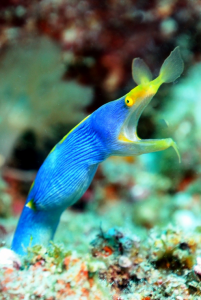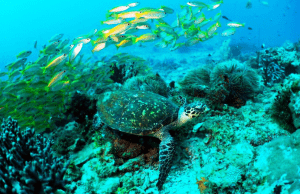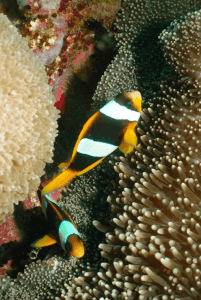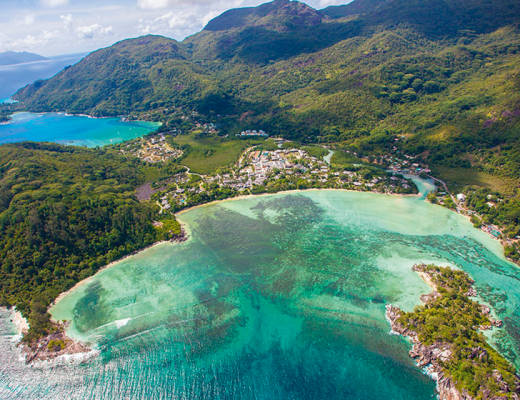Whether you’re snorkelling or scuba diving, the awe-inspiring beauty lying beneath the waves of the Indian Ocean will have you scrambling for an underwater camera.
Here is our list of top tips to capture the perfect underwater shot.
1. Get in close
For a beginner the best rule is to get close (within 30cm) of your subject. This is because too much water between you and what you’re taking a photograph of will reduce the colour, contrast and sharpness of your image.
2. Use ‘forced flash’ mode
Any photo of a subject less than 1 metre away will need a flash to add colour to your shot but make sure you set your camera to ‘forced flash’ rather than ‘auto flash’ – you’re camera may not think you need a flash but your pictures will prove that you do. If you do choose to take a picture of a subject further away you will need to turn off your internal flash to prevent the light bouncing off all the particles in the water creating ‘backscatter’.
3. Try out your equipment on land
Whether you’ve opted for underwater casing for your DSLR or you’ve invested in an underwater camera, you don’t want to be using it for the first time on your dive. Have a trial run before you reach the water and make sure you’re familiar with how it works and how it feels to save time and frustration on your dive.
4. For beginners macro mode will give the sharpest pictures
Use the camera’s macro mode to get really sharp, detailed close-up photographs of some of the amazing creatures you’ll see on your dive. The trick here is to get close rather than use your camera’s zoom as this will lead to a less sharp image.
5. Shoot from below
The most successful underwater photographs are taken from beneath or on eyelevel with the subject. This gives your photo the most dramatic lighting.
6. Think about your composition
Just because you’re underwater it doesn’t mean the usual rules of photo composition don’t apply. Try to make shots more interesting by filling the frame with your subject or putting them off centre. It’s very difficult to capture a ‘seascape’ of a reef with all the life and creatures on it so pick out one subject to focus on at a time instead.
7. Decent exposure
At first you might prefer using your camera’s programmed scene modes but as you get more skilled you could try altering your exposure to capture the exact image and lighting you want.
8. Think about showing scale
If you want to show your friends back home how tiny a sea creature was or how large then it’s a good idea to include something in the shot, which will give an idea of scale. A scuba diver swimming beside a wreck or a thumb beside a fish will give people looking at your shots an idea of size.
9. Don’t rush
Don’t be in a hurry to snap everything you see. Some of the best underwater pictures are captured by photographers who took the time to stop and look around them. Don’t be afraid to wait, camera poised, for a timid fish to decide that you’re okay before it swims right in front of your lens.
10. Editing is an underwater photographer’s friend
Don’t despair if you climb out of the water and find that your photos are too dark or under exposed, remember a lot can be done with editing software these days to lighten, sharpen and improve the contrast of photographs.
Read more
- Check out our shots of just some of the creatures you might encounter in the Indian Ocean
- See our guide to scuba diving in Maldives
- Find out why Seychelles is a top diving destination
- Dive the undiscovered ocean in Madagascar
- For more inspiration and advice visit underwater and surf photographer Sarah Lee’s blog.








1 Comment
Rachel
February 8, 2015 at 2:43 amHi there, everything is going sound here and ofcourse
every one is sharing facts, that’s truly excellent, keep
up writing.